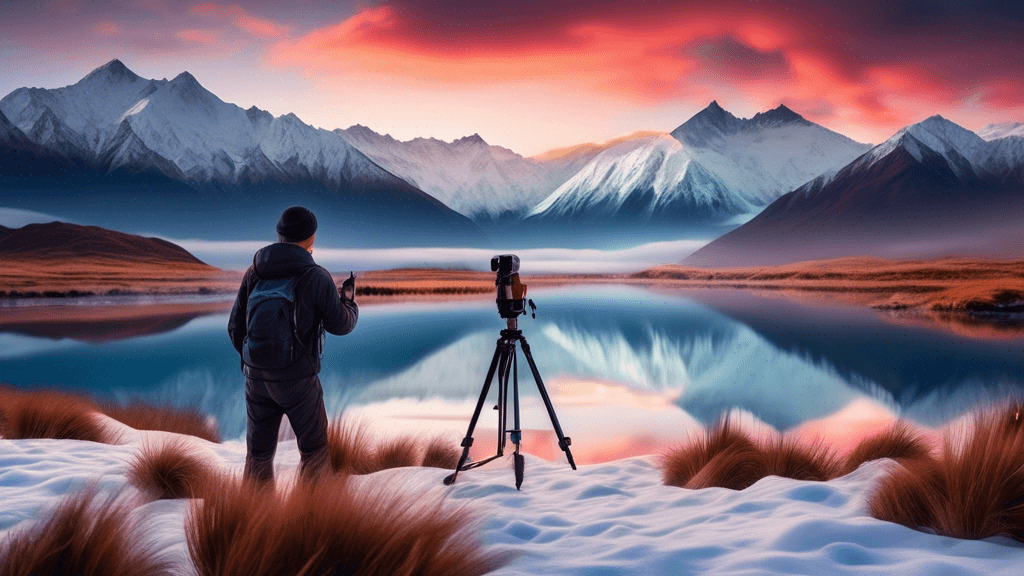
Peak Perfection: Tips for Capturing New Zealand's Mountain Summits Through Photography
Share
Introduction to Mountain Photography in New Zealand
New Zealand's mountainous landscapes are a photographer’s paradise. The rugged peaks of the Southern Alps, serene stretches of the Fiordland National Park, and the volcanic cones of the North Island offer scenes ripe for capturing through the lens. Whether you are a seasoned photographer or an enthusiastic beginner, understanding how to best capture these towering summits can elevate your photography from good to breathtaking.
Understanding the Best Season for Mountain Photography
Timing is critical in photography, especially when it comes to nature and landscapes. In New Acthe Zealand, weather conditions can greatly influence the quality of your photographs. Here are general guidelines on when to shoot:
- Summer (December to February): Offers longer daylight hours and generally stable weather, allowing for golden morning and late evening shoots.
- Winter (June to August): Ideal for capturing snow-capped peaks and dramatic, moody skies. The sun is lower in the sky, creating longer shadows and enhancing textures.
- Autumn and Spring: These transition seasons offer a mix of snow residue and clearer paths, milder weather, and less crowded locations.
Choosing the Right Equipment
Your choice of equipment can make a significant difference in mountain photography. A sturdy tripod and a variety of lenses are essential for capturing sharp images in changing conditions.
- Camera: A DSLR or mirrorless camera with manual settings is ideal, allowing you control over exposure, focus, and other critical settings.
- Lenses: A wide-angle lens (such as 14-24mm) for expansive landscapes and a telephoto lens (such as 70-200mm) for isolating distant peaks and features.
- Filters: Neutral density filters to manage light and polarizing filters to enhance skies and minimize reflections.
- Tripod: Essential for stability, especially in windy conditions or for long-exposure shots.
Pro Tip from a Specialist
“Understanding natural light and its nuances is the key in landscape photography. The golden and blue hours provide soft, directional light that can dramatically define mountainous terrain,” notes John Davies, a renowned landscape photographer. Embracing these times can dramatically elevate your images.
Techniques for Capturing Majestic Peaks
Photographing mountains involves more than just pointing and shooting; it requires thought and composition. Here are some techniques to consider:
- Composition: Use the rule of thirds to position mountains interestingly within the frame. Foreground elements like lakes or flora can add depth and interest.
- Focus: In landscape photography, it’s often best to have front-to-back sharpness. Use a smaller aperture (high f-stop number) to achieve a deeper depth of field.
- Exposure Bracketing: Taking multiple shots of the same scene at different exposure levels can help manage high contrast, especially during bright days, to ensure no part of your image is too dark or blown out.
Addressing the Challenges
Mountain photography often involves hiking and exposing yourself and your equipment to harsh environments. Always ensure you check weather conditions before heading out, carry protective gear for your equipment, and respect local regulations and environments—preservation is as important as the capture itself.
Beyond the physical challenges, the artistic aspect of selecting the right moment to shoot is crucial. “It’s not just the scenery you capture, it’s the moment,” as Davies articulates. This could mean waiting for the right cloud formation, the perfect ray of sunshine, or a sudden change in weather to bring your scene to life.
Connecting Through Your Work
Sharing your mountain photography can inspire and ignite passion in others. Consider contributing to photography exhibitions, online forums, or photo competitions. Each shared image tells a story of your personal experience and perspective, encouraging others to appreciate and protect these majestic landscapes.
Conclusion: Finding Your Unique Viewpoint
Every mountain peak in New Zealand offers a different narrative, and how you tell that story through your lens is inherently personal. Equip yourself with the right tools, respect your environment, and continually seek to improve your skills. The mountain summits of New Zealand are timeless, but the moments they offer are fleeting and uniquely yours to capture.
If you’re inspired to bring these tips to life, why not start planning your next mountain photography trip? Remember, behind every great photo is a tale of patience, perseverance, and passion. Happy shooting!





